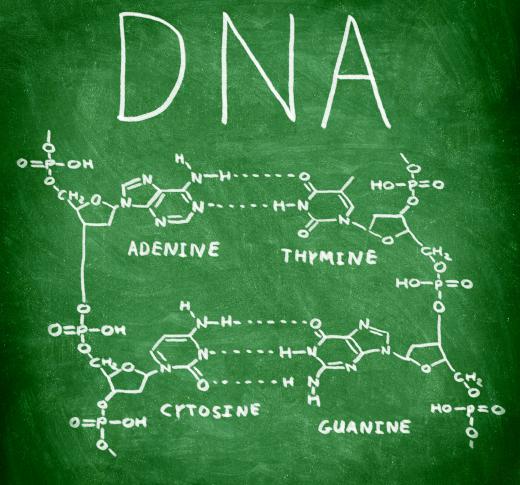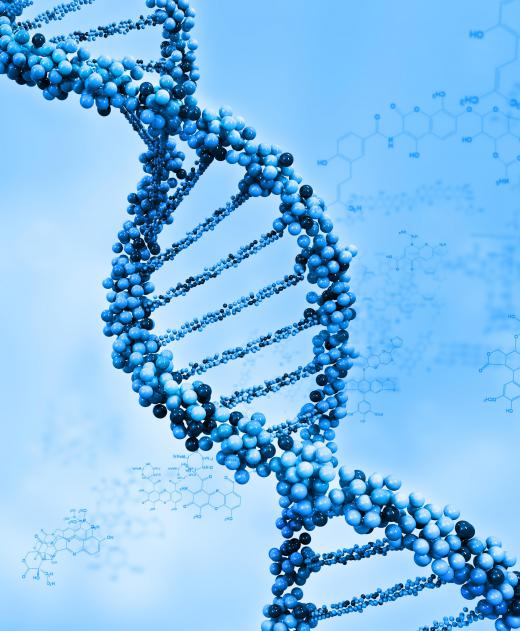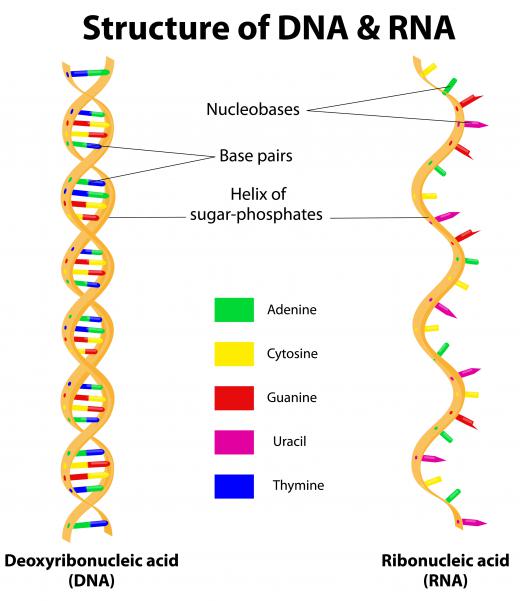What is Cytosine?
Cytosine is one of five nitrogenous bases that are attached to a five carbon sugar, pentose, and a phosphate group to make nucleotides. Nucleotides are the units that join together to make DNA and RNA molecules. The other bases, besides cytosine, that make up a DNA molecule are adenine, guanine and thymine. In an RNA molecule, uracil replaces thymine.
The bases are split into two different groups. Adenine and guanine are purine bases and cytosine, thymine and uracil are pyrimidine bases. The two groups differ in their basic structure. Purine bases are made up of two rings of atoms, while pyrimidine bases are made up of only one ring. The bases are called nitrogenous bases as the rings contain nitrogen and carbon atoms.

The bases always only pair with one other base. Purine bases bond with only pyrimidine bases. Purine bases never bond with other purine bases and pyrimidine bases never bond with other pyrimidine bases. Specifically, cytosine always pairs with guanine and adenine pairs with thymine or uracil, depending on whether in a DNA or RNA molecule. This pairing is referred to as specific base pairing.

Specific base pairing keeps the molecule a lot more uniform and stable. By having purine bases only bond with pyrimidine bases, the distance between the two strands of a DNA molecule will be uniform, a double ring and a single ring. If a purine base were to bond with another purine base, there would be double ring bonded to a double ring. If a pyrimidine base were to bond with another pyrimidine base, a single ring would be bonded to a single ring. If this were the case, the structure of the DNA molecule would not be uniform, it would bow in and out depending on what bases were paired.

Finally, the specific pairing is determined by the structure of each base. The structure affects how well the bases bond together and the number of hydrogen bonds that are formed. When cytosine bonds with guanine, three hydrogen bonds form between the two bases. When adenine bonds with thymine or uracil, only two hydrogen bonds are formed. Only these base pairs are capable of forming the required hydrogen bonds in a DNA molecule.
The sequence of bases along a DNA molecule forms the code to instruct a cell to make particular proteins, or genes. Triplets of the bases code for specific amino acids, the building blocks of proteins. The sequence determines what amino acids are to be joined together and in what order. Proteins in a cell determine a cell’s structure and function, so the nitrogenous bases carry the genetic code for a cell.
AS FEATURED ON:
AS FEATURED ON:













Discuss this Article
Post your comments